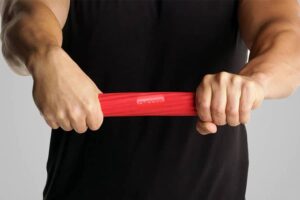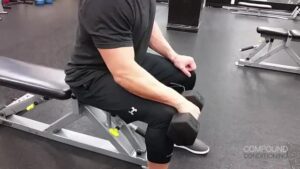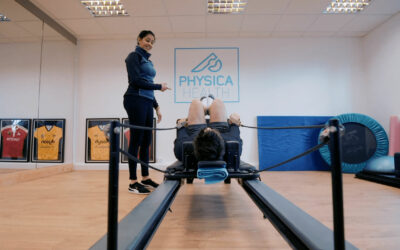Lateral epicondylosis, also known as tennis elbow, is a common elbow injury we often see as Physiotherapists. It can be frustrating because it usually happens in the arm you use the most and doesn’t respond well to traditional treatments that are still commonly used, despite recent evidence showing they’re not effective.
There are different ways to deal with tennis elbow. Some people rest their arms, while others exercise them. In this article, I’ll talk about why physiotherapy can help with tennis elbow and cover:
– What exactly tennis elbow is
– Why it causes pain
– How we diagnose it
– Why cortisone injections aren’t a good idea
– The right way to ease tennis elbow pain
– What a good long-term treatment plan involves
WHAT IS TENNIS ELBOW?
Tennis elbow used to be called lateral epicondylitis, but we now call it lateral epicondylosis because of new evidence. It might seem like a small change, but it affects how we treat this wrist extensor overuse injury. Lateral epicondylitis means inflammation, while lateral epicondylosis means degeneration.
This means we should focus on treating the degeneration of the common wrist extensor tendon at the elbow, rather than inflammation. These treatments are very different.
CAUSES
Tennis elbow mostly happens because you use your forearm muscles too much on one side, especially during activities like tennis or repetitive movements. Like most tendon injuries, too much strain on the tendon leads to degeneration happening faster than it can heal, causing tennis elbow.
As we mentioned before, recent evidence shows inflammation isn’t the main issue here; it’s the degeneration of the forearm wrist extensor tendon. So the most painful movements usually happen when you’re holding something with your wrist extended, like turning a doorknob or using keys. This also weakens your grip strength, a common symptom of tennis elbow.
Tennis elbow affects a wide range of people, from tennis players to office workers to manual laborers. In fact, many people experience some form of tennis elbow pain at some point.
STEROID INJECTIONS FOR TENNIS ELBOW
Cortisone injections have been commonly used to treat chronic tennis elbow pain. But now we know they’re not very effective for this injury. Injecting cortisone into the painful degenerated tendon can actually weaken tendons and make the degeneration worse, causing more elbow pain.
TENNIS ELBOW PAIN RELIEF TECHNIQUES
When dealing with tennis elbow, it’s important to avoid making the problem worse. But often people are just told to stop doing things they need or enjoy.
Instead, it’s better to limit or change the activity that’s causing the problem. This can mean:
– Doing the activity less often
– Using smaller objects during the activity, like using a smaller grip or racket in tennis
– Massaging the forearm muscles can help with pain, but it’s only a short-term fix and doesn’t solve the tendon degeneration
– Applying heat or ice can also help with pain, but it’s only a temporary solution
TENNIS ELBOW PAIN RELIEF EXERCISES
Strengthening exercises are the best way to reduce elbow pain and reverse tendon degeneration in the long term. Eccentric exercises are particularly helpful, where the muscle lengthens under tension instead of contracting.
- Flexbar Eccentric Exercise – The flexbar has been designed specifically for tennis elbow pain. The unique nature of the design allows you to load the wrist extensors through their natural movement, using your opposite hand as a counter lever, before slowly eccentrically loading the painful arm. When performing this exercise you would ideally have a very slow 6 second eccentric contraction. It is expected that there will be a tolerable level of pain and discomfort whilst performing this exercise, which is not harmful to the wrist extensor tendon.

- Eccentric Wrist Curl Exercise – Holding a small dumbbell with your palm facing the ground, begin in the fully extended wrist position before allowing a 6 second eccentric contraction as you lower the weight. It is also expected that there will be a tolerable level of pain and discomfort whilst performing this exercise, which is not harmful to the wrist extensor tendon.

Other Effective Treatments for Tennis Elbow
Extracorporeal (outside the body) Shockwave (high energy sound waves) therapy is a non-invasive treatment designed to treat some causes of chronic musculoskeletal pain without the need for injections, medication or surgery. It has been shown in studies to be effective, particularly in issues related to tendons.
TIPS & ADVICE
It’s important to find a Physiotherapist who knows how to treat tennis elbow and can create a plan tailored to you.
Don’t stop the activity completely, as tennis elbow is a tendon injury that needs some loading to heal.
And don’t rush back into normal activities too quickly. It’s common for people to feel better and then overdo it, ending up back in pain.
FREQUENTLY ASKED QUESTIONS




0 Comments